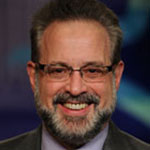Remembering the Lessons of HIV/AIDS
Content From: Ronald Valdiserri, M.D., M.P.H., Deputy Assistant Secretary for Health, Infectious Diseases, and Director, Office of HIV/AIDS and Infectious Disease Policy, U.S. Department of Health and Human Services•Published: November 23, 2015•4 min read
Topics

I was four years out of medical school, having just completed a residency in anatomic and clinical pathology in the summer of 1981, when the CDC reported the first cases of what we now know as AIDS, the end-stage of HIV infection. Younger readers of this blog may find it hard to imagine those early days of the epidemic. We didn’t know what caused AIDS. There was no specific laboratory test to diagnose the condition. And there was little that medicine could offer beyond struggling to treat the myriad, and gruesome, infectious and malignant consequences resulting from the profound immunodeficiency associated with this mysterious new disease. Is it any wonder that fear and ignorance flourished in a climate of such profound uncertainty?
But I can also report that that same climate of uncertainty and dread also bred caring of the highest degree, strong-fisted resolve and relentless action that has helped bring us to where we are today. True, our work toward finding a vaccine and a functional cure for HIV has not concluded, but the prevention and treatment options available to community and clinical providers in this fourth decade of the epidemic could hardly have been imagined in the early 1980s. That’s the good news. But there are also reasons to be circumspect.
Increases in new HIV infections among young gay men, along with recent HIV outbreaks among people who inject drugs remind us that our victory over HIV/AIDS is not a given. Whether it’s HIV infection or some other threat to our nation’s wellbeing, we must remember that achieving health is a continual process, not a destination. Our experience with the resurgence of tuberculosis in the U.S. in the latter part of the twentieth century is a cautionary example of what happens when we let down our guard, stepping back from public health efforts because we think that we’ve licked a disease. We must be very careful to avoid that same pitfall when it comes to our efforts to achieve an AIDS-free generation.
Caveats notwithstanding, all of us anticipate that science will continue to bring to fruition potent new tools to advance our work in HIV prevention, diagnosis and treatment. To quote Tony Kushner from his magnificent play about AIDS, Angels in America, “the world only spins forward.” And in the same way, we trust that ongoing research will continue to move forward, delivering positive results in the form of vaginal and rectal microbicides, evidence-based operational strategies to improve HIV care outcomes and that pinnacle of success, a vaccine that’s effective in preventing the acquisition of HIV. Great thoughts, indeed—and we should hold firm to them. But at the same time that we put our faith in the ability of science and technology to advance our fight against HIV/AIDS, it’s critical that we remember and act upon those principles that have carried us forward from the earliest and darkest days of the epidemic.
In our efforts to prevent HIV transmission and improve the care of persons living with HIV we must keep foremost in mind that we are not merely dealing with the interplay between a retrovirus and an individual’s immune system; it’s a much more nuanced interaction. Understanding and addressing the relevant social, economic and environmental circumstances of our client’s lives is as important today as it was back in 1981. And while as a nation we may have moved beyond the more blatant, headline-grabbing forms of stigma and discrimination associated with HIV in that first decade of the epidemic, we must continue to confront HIV-related stigma whenever and wherever we encounter it. Finally-- and this is a lesson that we should never forget--we are stronger and more effective when we can work together, building bridges across programs, disciplines and perspectives. The fact that biomedical science has tremendously advanced our ability to counter this epidemic should never be misinterpreted to mean that other components of a comprehensive response to HIV/AIDS are no longer necessary. Strong leadership, community mobilization, a shared vision of success and an unwavering commitment to empowering our most vulnerable populations must always be at the heart of our work to stop the HIV/AIDS epidemic here in the U.S. and abroad.
As I prepare to leave federal service and enter public health academia, I intend to carry these values with me. And I will remember the colleagues, associates and friends who embodied these principles, whether in the course of developing service delivery programs, implementing research to answer critical questions or struggling at a personal level to cope with the ravages of the virus in those times before we had access to highly effective therapy. They were my heroes and my inspiration. And they still are.